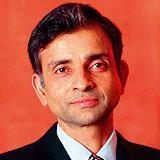
Vivek Ranadivé
The event-driven state of mind is by no means an invention of the digital age; its existence long preceded the wheel. In commerce, the event-driven state of mind has been in evidence for thousands of years wherever traders competed in the marketplace and practised the fine art of custom-tailored, knowledge-based personal service to a clientele small enough to be managed by one brain.
Today's event-driven technical infrastructure merely enables the event-driven state of mind to be projected on a global scale in the automated processes of business organisations, allowing those organisations to share critical information as quickly as easily as if they, too, were being managed by one brain: the event-driven information architecture.
Information systems are not an overlay to what your company is doing. They should be integral to your strategy. In fact, it may be very hard to implement any change in strategy without leading that change from the IT side. Though we seem to be drowning in information today, there will be orders of magnitude more information in play in the network, increasing the business necessity of systems that automate as many processes as possible and filter what is worth our attention from what is routine. These systems will require human intervention only in the most exceptional situations, and they will deliver crucial, value-added information about the entire commercial environment where and when it is needed. That, in a nutshell, is the mission of business integration technology and the value of being event-driven can offer any company seeking a competitive advantage.
The event-driven company does not form alliances. It eschews the cosy comforts of the keiretsu, with its interlocking relationships, because a keiretsu is a closed environment. Value thrives best in open systems.
The event-driven company is part of an information-intensive cellular structure, the virtual, integrated, real-time supply web. Its relationships with suppliers and partners/allies change quickly, and , when convenient. (And the company is prepared for the same treatment in return; in fact, it welcomes the same treatment as a way to prove its continuing value.)
Team players are OK. But the event-driven company prefers to hire - and tolerate the quirks of - ‘star' employees, who are often prima donnas. Star employees are quick to pursue emerging trends and take the risks that bring the highest rewards.
There's no need to watch the competition if you're spending enough time watching and learning from your customers. The competition can be a fatal distraction. Perfectly profitable companies went down the tubes trying to best competitors that didn't have to be defeated.
Join the CIO Australia group on LinkedIn. The group is open to CIOs, IT Directors, COOs, CTOs and senior IT managers.
